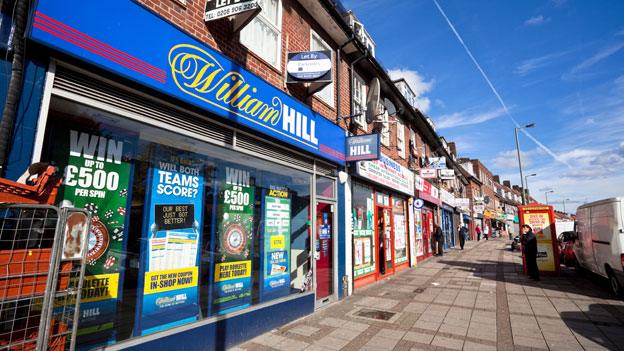Exhibition celebrates Southampton's concrete buildings
- Published

Faraday Tower, part of the University of Southampton, dominates the skyline of surrounding residential streets
A city's much-maligned concrete buildings have been recast as "architectural gems" in an exhibition.
Southampton's city centre sprawl has been described as "ugly" and "disastrous", with some accusing post-war planners of "causing more damage than the Luftwaffe".
But writer Owen Hatherley, who co-curated the "Brutalust" exhibition, said the buildings were misunderstood.
Sites featured include the Grade II-listed Wyndham Court residential block.
Much of the city centre was destroyed during German air raids, with other areas demolished in slum clearance programmes.
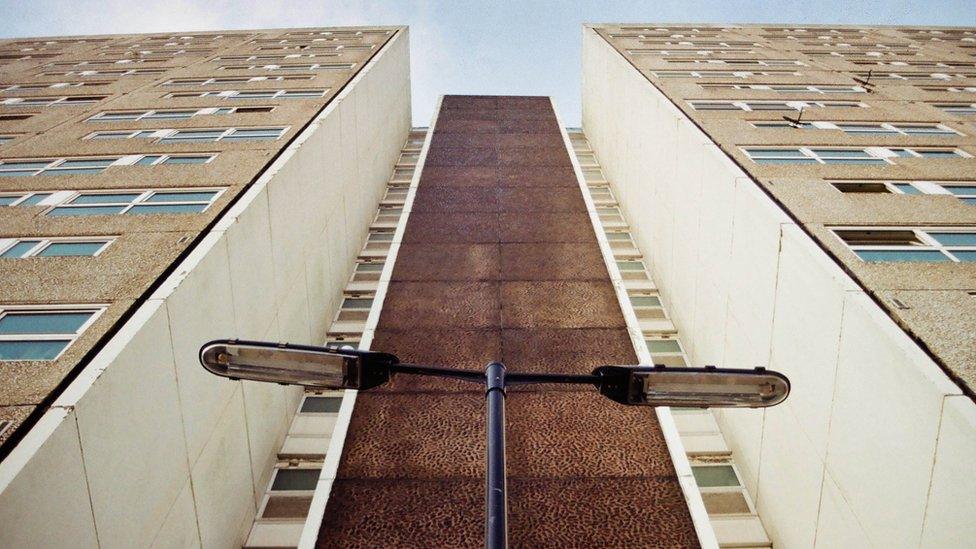
Shirley Towers was built in 1967
The city has struggled to escape its reputation for ugly architecture - it was nominated in the 2013 Crap Towns list, and its entry in the UK's Rough Guide describes "some disastrous post-war urban sprawl".
Mr Hatherley said the exhibition, organised by the K6 Gallery, was put together with photographers Greg Moss, James Newell and Daniel Cane in a bid to counter the long-running Luftwaffe joke in the city.
The images show "underrated" tower blocks, shopping centres and housing schemes that they consider as the city's best post-war buildings.
"They spoke well of the values and priorities of the time - council housing, schools, parks, health centres, run for the majority of inhabitants," Mr Hatherley said.
He described the Castle House tower block and Wyndham Court residential complex, the only listed building in the exhibition, as "absolutely first-class and up to anything else of their kind in Europe".
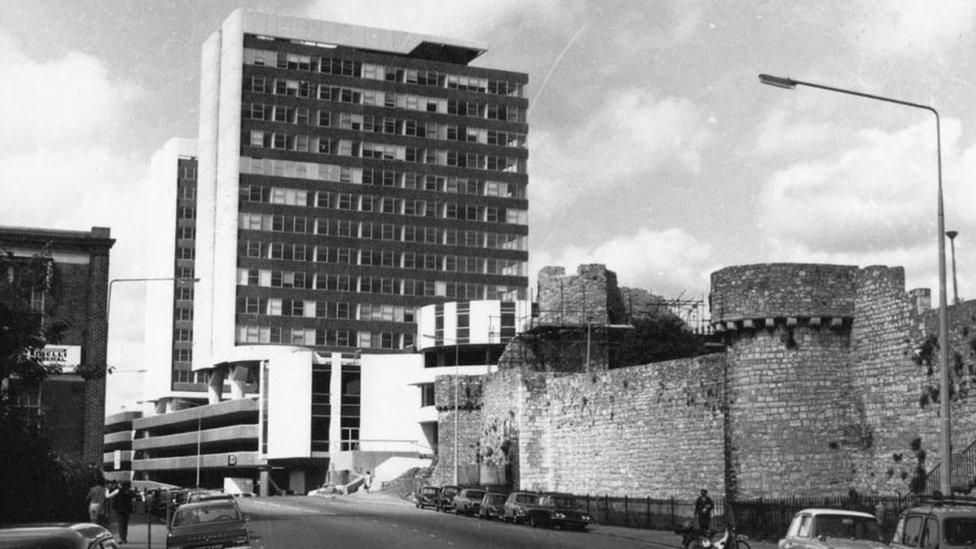
Arundel Towers were themselves demolished in the 1990s to make way for the West Quay Shopping Centre
"They are very sculptural, brutalist and architecturally dramatic. They are rough and craggy as was the fashion of the time, like the Barbican and Southbank in London. They are buildings that shout 'you are here'."
Some of the featured buildings have since been demolished - the Central Baths were flattened in the 1990s, along with the twin Arundel Towers with their connecting walkways, as well as a circular pub, the Dog and Duck.
Others, such as the university's Faraday building and Marlands House, have been earmarked for redevelopment or demolition.

The Grade-II listed Wyndham Court was designed by Lyons Israel Ellis to reflect the city's link with cruise liners
Mr Hatherley admits some of the housing schemes did justify their reputation as creating a concrete jungle.
"Some were badly built and maintained - they quickly became dilapidated. There wasn't much public transport and they quickly became grim places to live.
"Architectural fashions change - what is terribly hip in the 1960s can become unfashionable in the 1980s and 90s," he said.
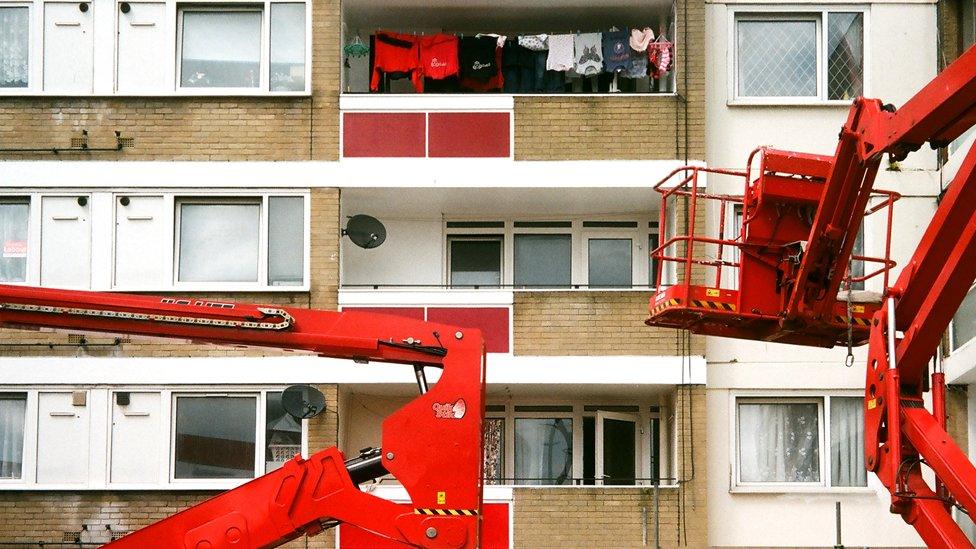
Holyrood Estate was built to replace slum housing bombed during World War Two
Pauline Mousley, from the southern branch of architectural heritage campaign group the 20th Century Society, said people would either "love or hate" the buildings.
"It's certainly an unloved period of architecture but it is part of our history," she said.
"Part of the trouble is the materials such as concrete that were used - they don't weather well over time and now don't look their best.
"They may be grey and unbeautiful, but they have terrific lines."
Brutalust: Celebrating Southampton's Post-War Architecture runs at the K6 Gallery, external until 7 April.
- Published4 November 2015
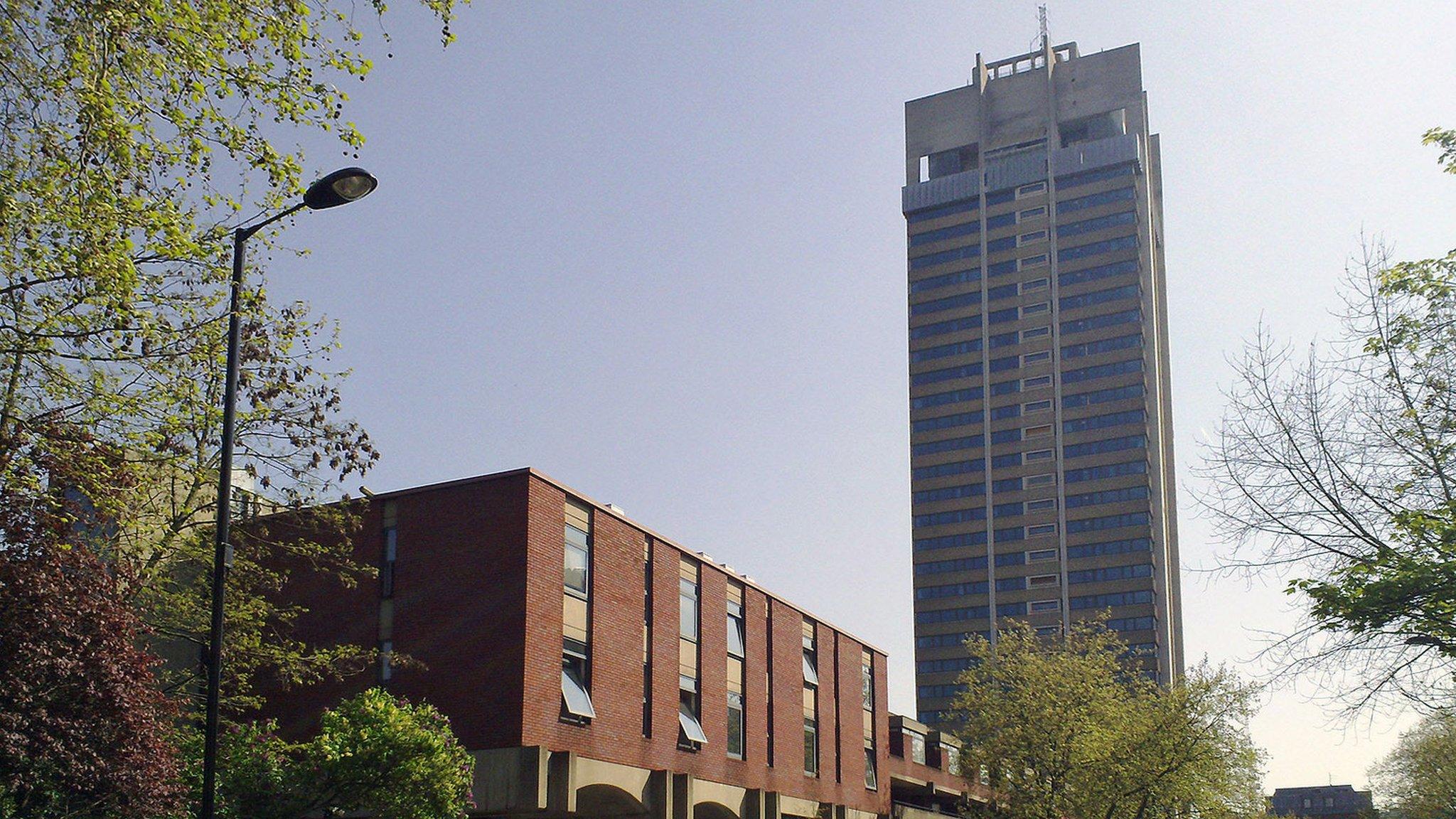
- Published17 February 2015
